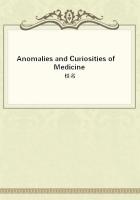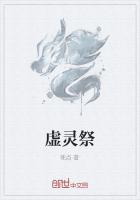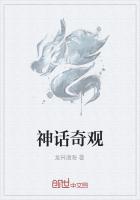His examination of the looted library was minute, taking in the window through which the thief had apparently entered, the cabinet he had forced, and the situation in general.Finally Craig set up his camera with most particular care and took several photographs of the window, the cabinet, the doors, including the room from every angle.Outside he snapped the two sides of the corner of the house in which the library was situated.Partly by trolley and partly by carriage we crossed the island to the south shore, and finally found McLoughlin's farm, where we had no trouble in getting half a dozen photographs of the porch and house.Altogether the proceedings seemed tame to me, yet I knew from previous experience that Kennedy had a deep laid purpose.
We parted in the city, to meet just before it was time to visit Miss Ashton.Kennedy had evidently employed the interval in developing his plates, for he now had ten or a dozen prints, all of exactly the same size, mounted on stiff cardboard in a space with scales and figures on all four sides.He saw me puzzling over them.
"Those are metric photographs such as Bertillon of Paris takes," he explained."By means of the scales and tables and other methods that have been worked out we can determine from those pictures distances and many other things almost as well as if we were on the spot itself.Bertillon has cleared up many crimes with this help, such as the mystery of the shooting in the Hotel Quai d'Orsay and other cases.The metric photograph, I believe, will in time rank with the portrait parle, finger prints, and the rest.
"For instance, in order to solve the riddle of a crime the detective's first task is to study the scene topographically.Plans and elevations of a room or house are made.The position of each object is painstakingly noted.In addition, the all-seeing eye of the camera is called into requisition.The plundered room is photographed, as in this case.I might have done it by placing a foot rule on a table and taking that in the picture, but a more scientific and accurate method has been devised by Bertillon.His camera lens is always used at a fixed height from the ground and forms its image on the plate at an exact focus.The print made from the negative is mounted on a card in a space of definite size, along the edges of which a metric scale is printed.In the way he has worked it out the distance between any two points in the picture can be determined.With a topographical plan and a metric photograph one can study a crime as a general studies the map of a strange country.There were several peculiar things that I observed to-day, and I have here an indelible record of the scene of the crime.Preserved in this way it cannot be questioned.
"Now the photographs were in this cabinet.There are other cabinets, but none of them has been disturbed.Therefore the thief must have known just what he was after.The marks made in breaking the lock were not those of a jimmy but of a screwdriver.No amazing command of the resources of science is needed so far.All that is necessary is a little scientific common sense, Walter.
"Now, how did the robber get in? All the windows and doors were supposedly locked.It is alleged that a pane was cut from this window at the side.It was, and the pieces were there to show it.
But take a glance at this outside photograph.To reach that window even a tall man must have stood on a ladder or something.There are no marks of a ladder or of any person in the soft soil under the window.What is more, that window was cut from the inside.The marks of the diamond which cut it plainly show that.Scientific common sense again.""Then it must have been some one in the house or at least some one familiar with it?"I exclaimed.
Kennedy nodded."One thing we have which the police greatly neglect," he pursued, "a record.We have made some progress in reconstructing the crime, as Bertillon calls it.If we only had those Hanford pictures we should be all right."We were now on our way to see Miss Ashton at headquarters, and as we rode downtown I tried to reason out the case.Had it really been a put-up job? Was Travis himself faking, and was the robbery a "plant" by which he might forestall exposure of what had become public property in the hands of another, no longer disposed to conceal it? Or was it after all the last desperate blow of the Boss?
The whole thing began to assume a suspicious look in my mind.
Although Kennedy seemed to have made little real progress, I felt that, far from aiding Travis, it made things darker.There was nothing but his unsupported word that he had not visited the Boss subsequent to the nominating convention.He admitted having done so before the Reform League came into existence.Besides it seemed tacitly understood that both the Boss and Cadwalader Brown acquiesced in the sworn statement of the man who said he had made the pictures.Added to that the mere existence of the actual pictures themselves was a graphic clincher to the story.Personally, if I had been in Kennedy's place I think I should have taken advantage of the proviso in the compact with Travis to back out gracefully.Kennedy, however, now started on the case, hung to it tenaciously.
Miss Ashton was waiting for us at the press bureau.Her desk was at the middle of one end of the room in which, if she could keep an eye on her office force, the office force also could keep an eye on her.
Kennedy had apparently taken in the arrangement during our morning visit, for he set to work immediately.The side of the room toward the office of Travis and Bennett presented an expanse of blank wall.
With a mallet he quickly knocked a hole in the rough plaster, just above the baseboard about the room.The hole did not penetrate quite through to the other side.In it he placed a round disc of vulcanised rubber, with insulated wires leading down back of the baseboard, then out underneath it, and under the carpet.Some plaster quickly closed up the cavity in the wall, and he left it to dry.
Next he led the wires under the carpet to Miss Ashton's desk.












